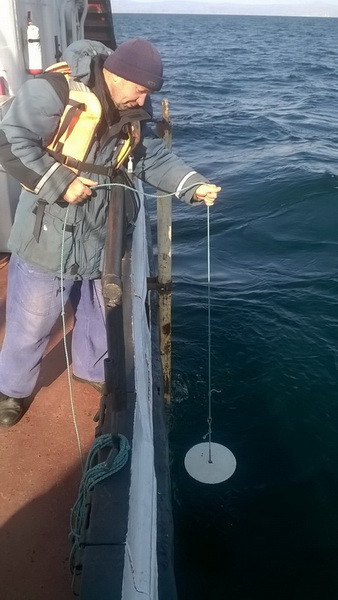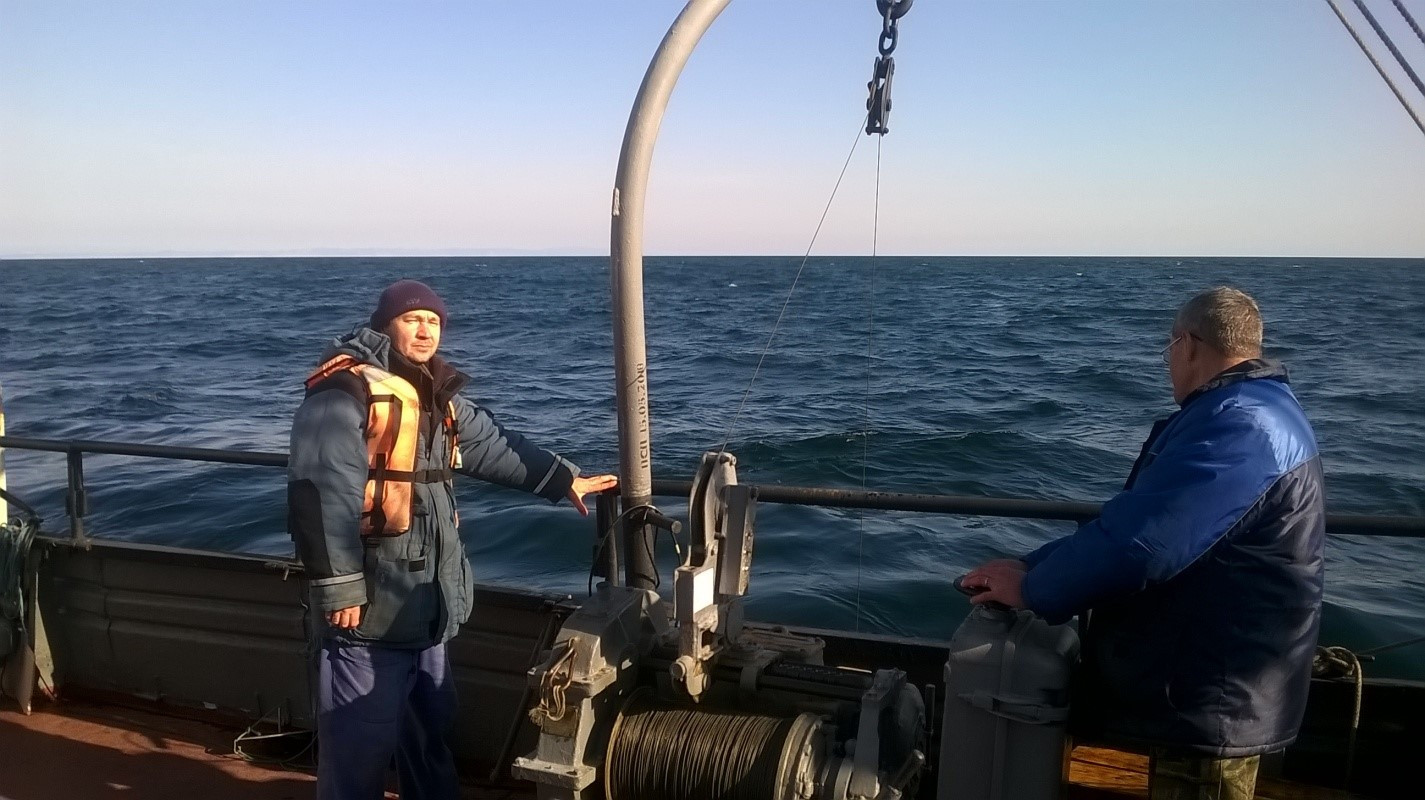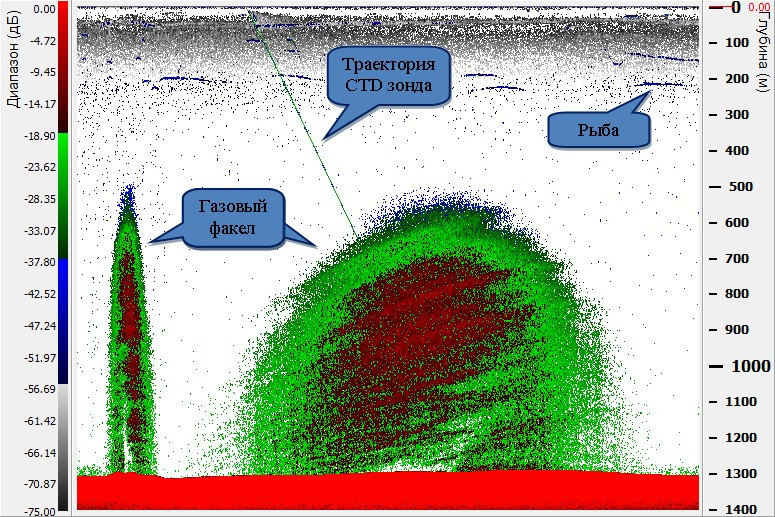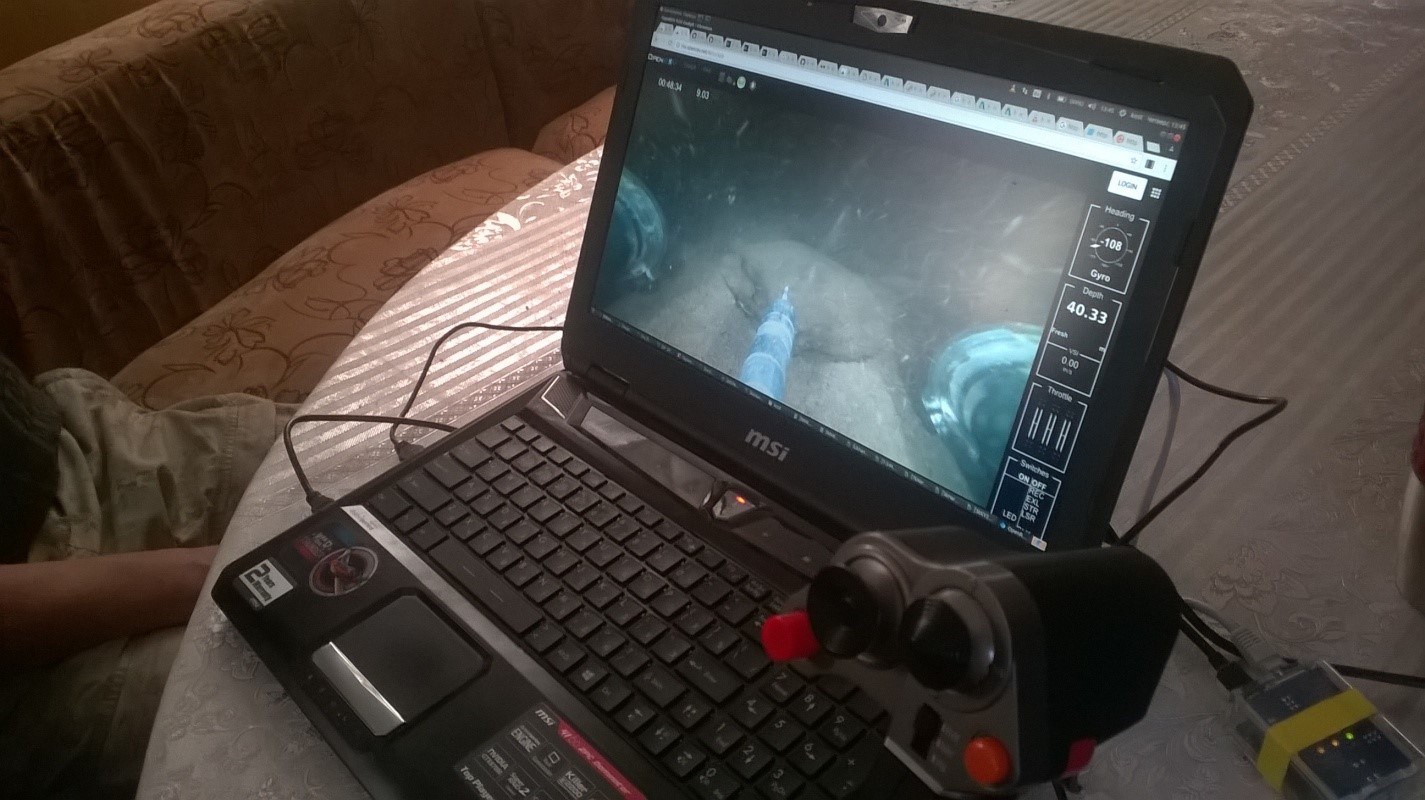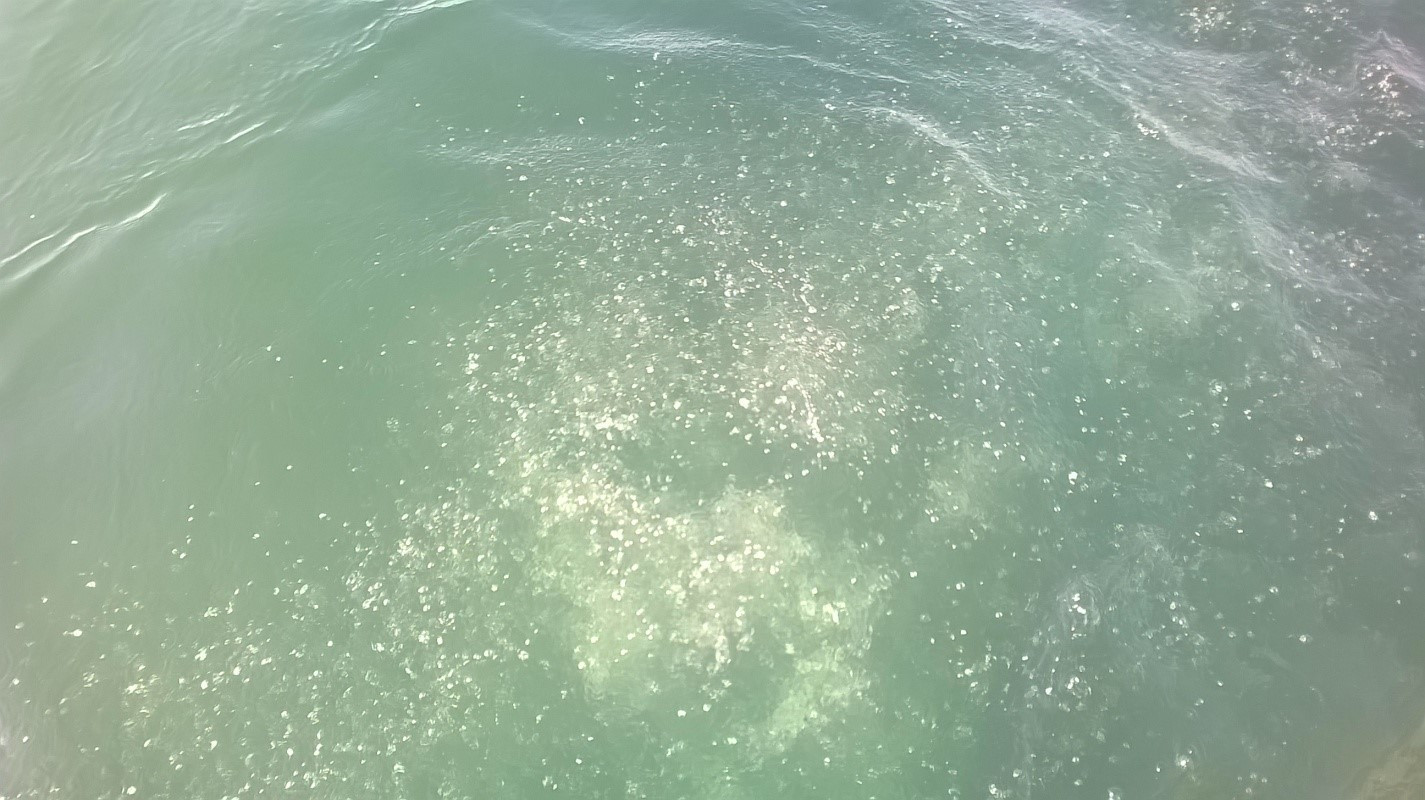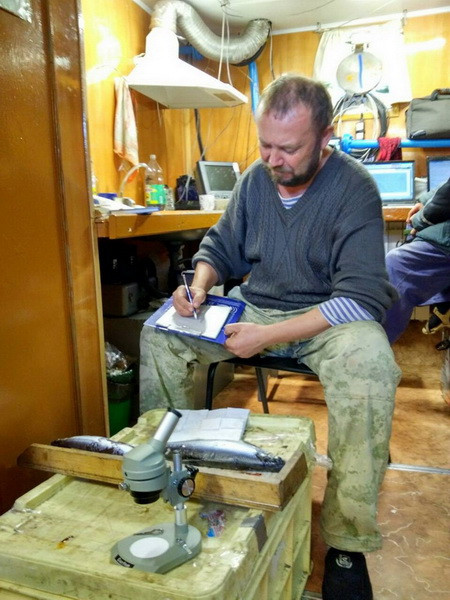Expedition on board RV “G. Titov”, October 11-20, 2018
Expedition was carried out within the programs “Assessment and Forecast of Ecological State of Lake Baikal and Adjacent Territories under Conditions of Anthropogenic Impact and Climate Change” and “Molecular Ecology and Evolution of Living Systems of the Central Asia under Global Ecological Changes” on board RV “G. Titov”, October 11-20, 2018 in the water area of Southern and Central Baikal.
The expedition was aimed at hydroacoustic studies of gas bubble seepages and the vertical distribution of hydrophysical characteristics near flares and in reference areas of Lake Baikal. The additional task was to determine the specific features of the dependence of target strength (TS) on the dimensions of Baikal omul during implementation of the behaviour caused by food activity. Moreover, in the course of this expedition, in addition to regular research, monitoring of the known gas seepages and search for new areas of hydrocarbon discharge, as well as hydroacoustic survey of bathymetry in areas of possible gas seepages were planned.
During the expedition, hydrophysical measurements were performed using a high-precision SBE-25 CTD probe with additional sensors of dissolved oxygen and transparency. In total, 56 probing were performed. Of them, five probing were performed in points with coordinates of gas seepage centres. Throughout the expedition, a hydroacoustic survey and measurement of the surface water temperature were carried out twenty four hours. It was found that surface water temperature decreased towards the centre of the lake and increased towards the western shore of Baikal. The study of the omul behaviour and a nature of distribution of TS values at night, including the conditions of illumination, when omul actively hunts the hydrobionts attracted by light, was an interesting work conducted in the expedition. Control hook fishing showed lower selectivity of this fishing method in comparison with gill-net fishing and, hence, higher representativeness of the data obtained. As a result, preliminary data on the correspondence of the length composition of the catch (size and mass of caught fish) with TS data observed with the echo sounder.




